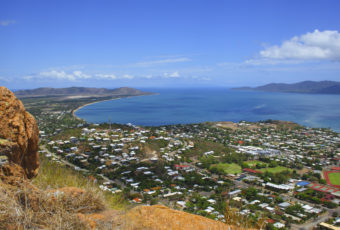What is the Sydney Master of Wildlife Health and Population Management?
FAQs – Master of Wildlife Health and Population Management degree
What makes this degree different from other degrees offered in wildlife studies?
- You will learn by doing. All teaching is centred on field, laboratory, or computer-based ongoing research activities the results of which will have real-world outcomes. This degree is based on units of study which provide intensive field study sessions.
- You will be taught by world renowned experts who are actively involved in the field, including experts from government, academia, and private industry.
- Because of the very small class size, you will receive an education that is tailored to your interests.
- You will be studying in one of the most ecologically diverse and beautiful areas in the world.
- Upon completion you will have a comprehensive set of tools for managing wildlife populations, these skills will provide you with job opportunities in government, the not-for-profit sector and the private sector or opportunities to enter PhD programs.
- This degree is based on units of study which provide intensive field study sessions.

What type of undergraduate qualification do I need to have?
This course is designed for students who have completed an undergraduate degree in science with a major in biology, agriculture, ecology or conservation. It will also appeal to veterinary graduates who have an interest in Conservation and wildlife. Those students with a sufficient grade point average and some research training can enrol in the 48 credit Masters program. Those without research projects, experience or a lower GPA are eligible for the 72 credit Masters program.
What type of jobs will be available to me upon completion of this degree?
Based on the success of our previous graduates, your study will prepare you for entry into jobs in private industry, not-for-profit organizations, zoos and wildlife parks, academia, and government at all levels, from applied work in State and National Parks to policy development at the minister’s level. If you are already employed in these fields, the wildlife health Masters will provide you with new opportunities for growth and promotion. For those of you who are interested in obtaining a PhD, the Wildlife Masters allows you to identify fields of study and investigators with who you would like to work and gives you strong credentials allowing entry into entry into top-quality programs.
How do I qualify for the shorter 48 credit point version of this degree?
If you do have a sufficient grade point average and have taken coursework with a significant research component, graduated with honours, have another master’s degree, or have a veterinary degree you may be eligible for the 48 credit point version of the Master of Wildlife Health and Population Management.
When you submit you application for this degree program, your qualifications will be automatically assessed and if you have what is termed a Level 8 degree, you will be given credit for 24 credit points. If there is any uncertainty about the nature of your undergraduate degree, the university may ask for further documentation. Please include any copies of research you have been involved with as part of your submission.
I have already worked extensively as a volunteer in wildlife organisations. What can this degree add to my experience?

The Master of Wildlife Health and Population Management is designed to challenge you and expand you knowledge and skill base no matter what experience level you have when you enter the program.
What type of animals am I likely to encounter during the fieldwork?
During field work, you will encounter a broad range of native Australian birds, mammals, reptiles, and amphibians. In the greater Sydney area it is possible to see more than 200 species of birds, including many seabirds that cannot readily be found anywhere else in the world. In the field studies, you will see koalas, platypus, brush-tailed possums, eastern grey kangaroos, swamp wallabies, wallaroos, wombats, grey-headed flying foxes, and several species of microbat. In October during one unit of study, the university saw eight species of reptiles and 10 species of frogs. While at Western Plains Zoo during the WILD5006 Ex-Situ Wildlife Management unit you will encounter a wide range of native and African wildlife.
What areas of research can I be involved with in my research project? Can I choose my own?
There are projects that relate to koalas, platypus, macropods, wombats, birds, frogs, and even invertebrates, e.g., the Cumberland land snail. These can range from ecology-based, to genetics, to health-related projects. Most will be focused on issues that relate to the local ecosystems including the Blue Mountains Wilderness Heritage area, the Sydney Basin, and the Southern Highlands, although some projects are more wide ranging. You are free to discuss any ideas or current involvements you have regarding research projects with your academic supervisor.
Program: Master of Wildlife Health and Population Management
Location: Sydney, New South Wales
Semester intake: March and July
Duration: 1 year
Application deadline: January 31 for the March intake; June 30 for the July intake. Applicants are strongly encouraged to apply as early as possible, as offers are made on a rolling basis and places are limited.
Apply to the University of Sydney!
*

































Ask A Question
Ask us about your program of interest, or if you have a question about our services.
CONTACT US TODAY